NYPD Equipment Bureau Records
Return to Index
Page
EQUIPMENT
BUREAU REVOLVER SALES
The Equipment Bureau (EB) of the New York City Police
Department (NYPD)
was the command responsible for kitting out newly hired police
officers. The Department often vacillated between referring to this
command as the Equipment Bureau or the Equipment Section. I have
observed that most period documents are stamped Equipment Bureau and
shall refer to it as such in all my work.
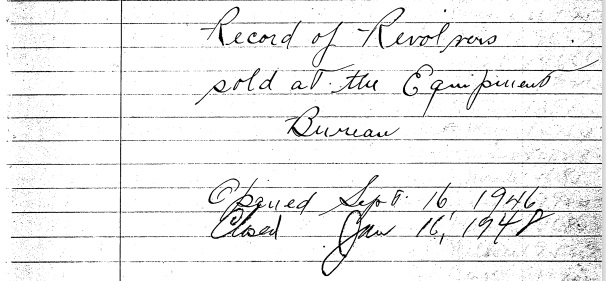
Figure 1 - The unit responsible for the sale of equipment to
officers identified itself as the Equipment Bureau. While the
Department's offcial identification of the unit wavered bewteen
Bureau and Section, the folks at the command itself seemed pretty sure
what they were about. - Image: NYPD-EB; Book 46-48; cover page.

Figure 2 - By 1952 someone had acquired a rubber stamp. - Image:
NYPD-EB; Book 52-55; cover page.
Whilst officers had the option of purchasing their
uniforms and equipment from approved sources outside the department,
most chose to outfit themselves from the Equipment Bureau because of
convenience, better prices and, for a while, loan accounts to help pay
for the initial outfitting.
An officers revolver was typically his most
expensive outlay and purchasing it from or through the Equipment Bureau
was usually the most economical way of acquiring ones’ departmental
piece.
Records of revolver sales were maintained by the
Equipment Bureau. These handwritten entries were recorded in
legal-sized hardbound ledger books. Each book was approximately 200-250
pages long and contained 36-37 entries per page. The type of
information contained in each entry varied but at minimum contained:
* Make
* Model
* Serial number
* Caliber
* Date
* Selling officers initials
* Purchasing officers:
o Name
o Shield number
o Command
Additional information was sometimes listed depending upon the era and
efficacy of the recording officer. Such additional information might
have been:
* Rank
* Tax ID number
* Equipment Bureau number
* Training class designation
As best as I have been able to determine, surviving
records cover the period of 1921 through 1987. There are multiple gaps
in the record timeline where ledger books can not be accounted for.
Most of the pre-WW2 records are missing. WW2 and post-WW2 records are
largely intact but with some gaps.
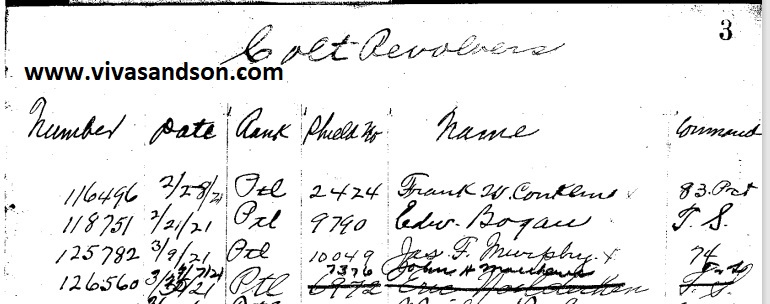
Figure 3 - The earliest
surviving revolver sales record is for Colt Police Positive #116496
sold to Patrolman Frank W. CONKLIN, shield #2424, assigned to the 83rd
Precinct. Patrolman CONKLIN is noted in the 05NOV21 edition of the
Times Union newspaper of having fired his revolver to summon the
reserves when confronted by a mob during a dairy workers strike. Image:
NYPD-EB, Book 21-26, p. 3.
The information for each record was either wholly
contained on one page or was spread across two pages. When I copied the
records, I copied only the pages that had serial number data. If an
officers record was contained to a single page, it would have been with
the serial number and I would have a complete copy. If the officers
record was spread across two pages, I would only have the page with the
serial number data and part of the officers information; usually this
results in a record that is incomplete to date or command.
The records were all handwritten and their
usefulness was predicated upon their legibility. Many different
officers maintained the records and the quality of penmanship ranged
from satisfactory to artistically illegible to absolutely abysmal.
While numbers were usually legible, names could be a major challenge to
decipher.
Initially, perhaps 15% of the names could be
deciphered with any degree of certainty. Names that could have multiple
spellings (BAER, BEAR, BEHR) were especially tricky because if it was
partially legible, the temptation to fill in the undecipherable part
with the presumed spelling ran the risk of getting the name wrong.
Since any subsequent record searches hinged on the proper spelling of
the name, it was possible to come up with an investigatory dead end not
because of a lack of records but simply because of a misspelled name.
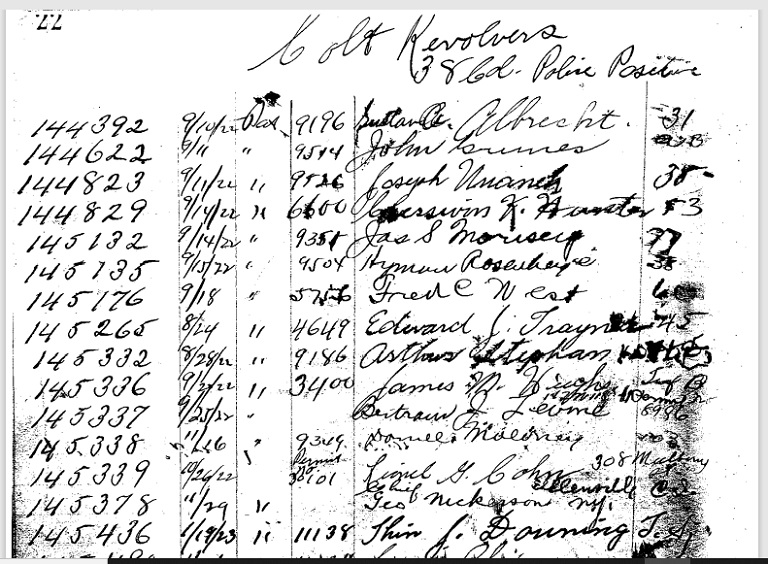
Figure 4- A typical ledger book entry displaying some of the issues
associated with penmanship. Numbers are usually legible, but names can
be a challenge. This example is typical of most of the records. Image:
NYPD-EB, Book 21-26, p. 22.
A solution to this problem was to compare the
illegible names to a list of graduates from department commencement
exercises. For example: if J--n SM--H bought his gun on January 2,
1942, then one
can extrapolate that he graduated sometime in April 1942. A review of
commencement records for April 1942 showed a graduating class of 196
men, 16 of whom had a first name that started with J; of those 16, 2
had a last name that started with S and of those 2 only 1, John SMITH,
had a last name that started with S and ended with H.
Using this cross-referencing technique, the ability
to decipher names went from %15 to approximately %98. Additionally, it
was possible to see what the graduation rate of recruits was by
comparing the number who bought revolvers to the number who were in the
graduating class.
Records of commencements were obtained from back
issues of the department’s internal magazine, SPRING 3100, and some
period newspaper articles. Prior to WW2 it was quite common for
newspapers to publish a complete list of graduating officers as well as
having that list published in SPRING 3100.
Post-WW2
the practice seems to have faded and it becomes necessary to look to
other sources for such lists. Research thus far has not turned up
anything promising in terms of alternate list sources but the process
is ongoing.
SURVIVAL
RATE
Despite their historical value and legal usefulness
(Federal law requires the maintenance of revolver disposition records)
the ledgers were somewhat casually maintained. When I first became
aware of their existence they were stored in two milk crates under a
restroom sink in the Equipment Bureau at Police Headquarters.
While going through the original records it was not
unusual to find a memo slip that indicated a law enforcement agency was
conducting a trace of a revolver that factory records had shipped to
the NYPD. The Department would then have to go through the ledgers,
find the entry of the revolvers disposition and forward that
information to the inquiring agency. This indicated that despite their
age the ledgers still had an investigatory value that should have
merited their retention.
The following ledgers were observed and copied. The
titles given are the titles by which the Equipment Bureau labelled them.
* Book 21-26
* Book 26-39
* Book 42-46
* Book 46-48
* Book 48-50
* Book 50-51
* Book 51
* Book 52-55 Series C Off-duty
* Book 52-62 OP Sales
* Book 55-58
* Book 56-63 S&W M&P
* Book 58-61
* Book 61 Off-Duty Revolvers
* Book 63 Series A
* Book 66-69 M&P Sales
* Book 67 Off-Duty
* Book 69 M&P Series A
* Book 69 Off-Duty
* Book 70 Series C
* Book 71 Series B Metropolitan
* Book 73 Series C
* Book 73 Series D
* Book 75 Series C
* Book Alternate MkIII
* Book Ruger 4 inch V
* Book 2 inch S&W
A statistical breakdown of the information available reveals the
following records available. Numbers given are approximate, as some
data is still being reviewed:
Smith
& Wesson - Total processed records 59,446
* S&W M&P Pre-War Series – 287
* S&W M&P V/SV Series – 851
* S&W M&P S Series – 4,693
* S&W M&P C Series – 18,841
* S&W M&P D Series – 9,097
* S&W M10 2” – 400
* S&W M36 ### Series – 11,471
* S&W M36 J Series – 9,874
* S&W M36 3” Series – 1,455
* S&W Terriers – 1,547
* S&W .32 HE – 905
* S&W Regulation Police – Not Processed Yet
Colt -
Total processed records 13,466
* Colt Army Special/Official Police – 7213
* Colt Cobra – 720
* Colt Commando – 951
* Colt Detective Special – 3351
* Colt Metropolitan – 647
* Colt Police Positive – 584
* Colt Police Positive Special – Not Processed Yet
It is very
important not to draw conclusions about brand preference from
these statistics. Due to the gaps in record timeline, it’s entirely
possible that entire ledgerbooks of Colt’s may not be represented in
these figures. The most accurate statement that can be made is that, based upon
available data, the Department favored S&W over Colt by a
4:1 ratio.
DATABASE
CREATION
The process of creating a database of revolver data
initially took about 2 years.
The initial entries were very brief and contained
the following information:
* Serial number
* Date
* Record source
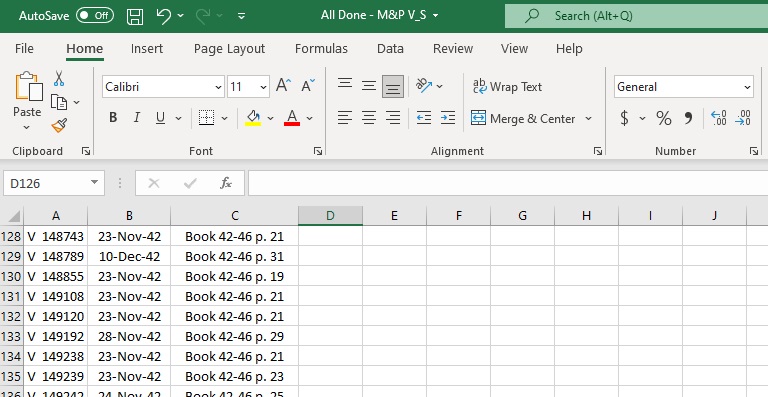
Figure 5 - Initial database entries
contained only three fields: Serial Number, Date of Sale and Record
source. The file name, All Done - M&P V_S indicates that this data
is contained in the spreadsheet for --ALL-- S&W M&P's that
contained a V- or S- series serial number. For practical purposes the
only searchable feature here is the serial number. Image - Authors
Database
Each record group was based upon a revolver make and
model, so it was not necessary to include that information in the
entry. One simply opened a spreadsheet labelled S&W M&P and
then searched for a specific serial number. After finding that serial
number, the record location (Book 42-46 p. 123) was noted and the
hardcopy of that specific book and page number was looked up.
This was an effective system but was hampered by two
limitations: searches could only be done by serial number and the
illegible handwriting was still an issue. A specific revolver record
might be found but the details of who it went to could not be
determined.
Once the technique of cross-referencing the revolver
records with commencement records was established it became possible to
create Enhanced Entries.
Enhanced Entries took the original 3 element entries and expanded them
to include all relevant data. All fields were searchable, and this made
it much easier to determine who got which gun, particularly when
fielding the very common inquiry “My uncle was on the job in 19XX. His
name was XXX XXXXX; what gun did he have?”. Where previously searches
could only be done by serial number, they could now be done by multiple
search fields:
* Make
* Model
* Serial Number
* Caliber
* Equipment Bureau Number
* Officers:
o Name
o Shield Number
o Command
o Graduation date
* Source of data
In some cases, tax ID numbers were also included.
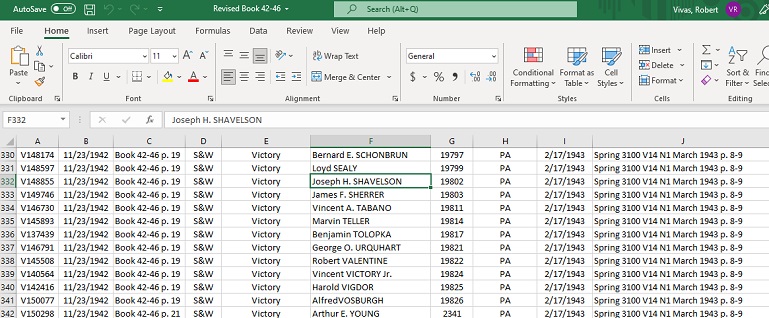
Figure 5 - Initial database entries
contained only three fields: Serial Number, Date of Sale and Record
source. The file name, All Done - M&P V_S indicates that this data
is contained in the spreadsheet for --ALL-- S&W M&P's that
contained a V- or S- series serial number. For practical purposes the
only searchable feature here is the serial number. Image - Authors
Database
For the firearms collector, particularly one with an
interest in law enforcement guns, these records are of inestimable
value. They allow for the identification of a specimen not only as an
NYPD gun but allow us to clearly document what NYPD officer purchased
the gun and carried it on the streets of New York.
In many instances, the recovered data can be used in
searches of newspaper databases can turn up details of the officers
career that can enhance the value and enjoyment of a specific revolver.
Return to Index
Page
Email: robert@vivasandson.com





